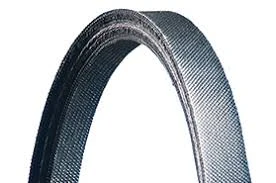- Arabic
- French
- Russian
- Spanish
- Portuguese
- Turkish
- Armenian
- English
- Albanian
- Amharic
- Azerbaijani
- Basque
- Belarusian
- Bengali
- Bosnian
- Bulgarian
- Catalan
- Cebuano
- Corsican
- Croatian
- Czech
- Danish
- Dutch
- Afrikaans
- Esperanto
- Estonian
- Finnish
- Frisian
- Galician
- Georgian
- German
- Greek
- Gujarati
- Haitian Creole
- hausa
- hawaiian
- Hebrew
- Hindi
- Miao
- Hungarian
- Icelandic
- igbo
- Indonesian
- irish
- Italian
- Japanese
- Javanese
- Kannada
- kazakh
- Khmer
- Rwandese
- Korean
- Kurdish
- Kyrgyz
- Lao
- Latin
- Latvian
- Lithuanian
- Luxembourgish
- Macedonian
- Malgashi
- Malay
- Malayalam
- Maltese
- Maori
- Marathi
- Mongolian
- Myanmar
- Nepali
- Norwegian
- Norwegian
- Occitan
- Pashto
- Persian
- Polish
- Punjabi
- Romanian
- Samoan
- Scottish Gaelic
- Serbian
- Sesotho
- Shona
- Sindhi
- Sinhala
- Slovak
- Slovenian
- Somali
- Sundanese
- Swahili
- Swedish
- Tagalog
- Tajik
- Tamil
- Tatar
- Telugu
- Thai
- Turkmen
- Ukrainian
- Urdu
- Uighur
- Uzbek
- Vietnamese
- Welsh
- Bantu
- Yiddish
- Yoruba
- Zulu
нов . 26, 2024 06:15 Back to list
Optimizing Variable Speed for Belt Pulley Systems in Mechanical Applications
Understanding Variable Speed and Its Application in Belt Pulleys
In the realm of mechanical engineering and power transmission, the concept of variable speed is pivotal, particularly when associated with belt pulleys. Belt pulleys, which are integral components in numerous machines and systems, allow for the efficient transfer of power from one component to another. The ability to manipulate the speed of a belt pulley system can significantly enhance its performance, efficiency, and flexibility in various applications—from manufacturing to transportation.
The Basics of Belt Pulleys
At its core, a belt pulley system consists of two or more pulleys connected by a belt. The primary purpose of a pulley is to change the direction of force, minimize friction, and facilitate the transfer of motion and power between shafts. Typically, the speed at which a pulley spins is determined by the diameter of the pulleys involved and the speed of the driving motor. However, when the need arises for flexibility in operations—such as in conveyor systems, fans, or motors—a variable speed approach becomes fundamentally important.
What is Variable Speed?
Variable speed refers to the ability to modify the rotational speed of a mechanical component in real-time. This flexibility allows for better control over processes, enabling adjustments based on varying operational requirements. For instance, in manufacturing settings, the speed of a conveyor belt may need to change depending on the load being transported, while in HVAC systems, fan speeds may need to adjust based on the temperature demands of a building.
Implementing Variable Speed in Belt Pulley Systems
To achieve variable speed in belt pulley systems, several approaches can be utilized. These include
1. V-Belt and Sheave Systems This classic method employs different-sized sheaves (pulleys) and V-belts, allowing operators to change the belt's path to alter the effective diameter of the driven pulley. By shifting the belt to a larger or smaller pulley, the speed can be adjusted accordingly. However, this method requires mechanical intervention, which can be time-consuming.
variable speed v belt pulley

2. Variable Frequency Drives (VFD) In modern applications, VFDs have become prominent for controlling the speed of electric motors connected to pulleys. By varying the frequency of the electric current supplied to the motor, the rotational speed of the attached pulley can be manipulated seamlessly. This allows for precise control over the operations without mechanical adjustments.
3. Electronic Speed Controllers Similar to VFDs, electronic controllers can modulate the speed of motors in pulley systems with sophisticated algorithms. These systems can integrate with sensors to provide instant feedback, allowing automatic adjustments based on real-time data such as load or operational speed requirements.
4. Step Pulleys These consist of multiple concentric pulleys of varying diameters, allowing manual selection of pulley size to achieve desired speeds. While this method isn't as flexible as VFDs or electronic controllers, it provides a cost-effective solution for applications with less frequent speed changes.
Advantages of Variable Speed in Belt Pulley Systems
The incorporation of variable speed technologies in belt pulley systems presents numerous advantages
- Energy Efficiency By optimizing the speed to match operational needs, energy consumption can be reduced significantly. - Enhanced Process Control Variable speed capabilities allow for finer control over manufacturing processes, leading to better quality output and reduced waste. - Extended Equipment Life Operating equipment at optimal speeds can minimize wear and tear, extending the service life of both the motor and the pulley system. - Flexibility in Operations Variable speed systems can be adapted for various applications without the need for complete overhauls, making them versatile in changing production needs.
Conclusion
In conclusion, variable speed technology plays a crucial role in the efficiency and effectiveness of belt pulley systems. As industries continue to strive for greater efficiency and adaptability, the integration of variable speed mechanisms is expected to grow, driving innovations in design and application. Understanding these systems and their implications is essential for mechanical engineers and operators aiming to optimize performance in their respective fields. With advancements in technology, the future of variable speed applications in belt pulley systems looks promising, offering solutions that not only meet but exceed industry expectations.
-
Korean Auto Parts Timing Belt 24312-37500 For Hyundai/Kia
NewsMar.07,2025
-
7PK2300 90916-T2024 RIBBED BELT POLY V BELT PK BELT
NewsMar.07,2025
-
Chinese Auto Belt Factory 310-2M-22 For BMW/Mercedes-Benz
NewsMar.07,2025
-
Chinese Auto Belt Factory 310-2M-22 For BMW/Mercedes-Benz
NewsMar.07,2025
-
90916-02660 PK Belt 6PK1680 For Toyota
NewsMar.07,2025
-
drive belt serpentine belt
NewsMar.07,2025

